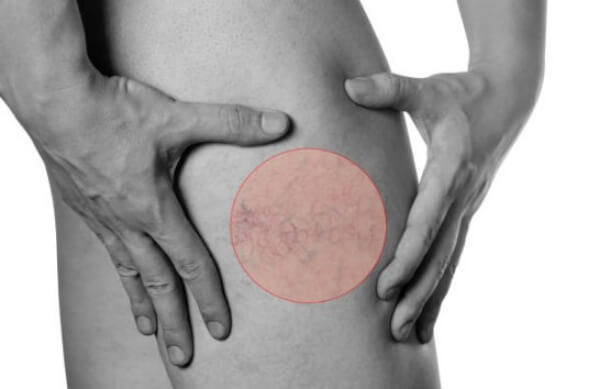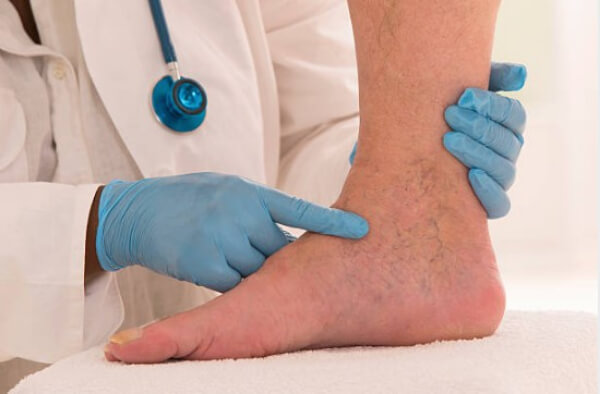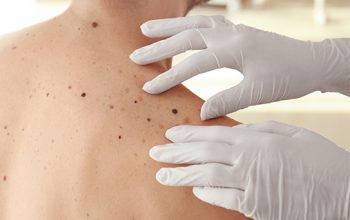Varicose veins are a chronic disease. They are a sign of a problem with blood pressure and the pumping of blood around the body. They are easily recognized by telangiectasia.
These are the so-called “arachnids” or “net-like” dilated venules or small veins. Their color ranges from blue to dark blue and purple. They are often mistaken people to think of them as dilated capillaries, but they are not. In addition to aesthetic discomfort, they are also characterized by discomfort when moving, swelling of the skin in the affected area, cramps, pain, and a feeling of heaviness. Symptoms usually worsen late at night and early in the morning when the body is most exhausted.
Science has found that women suffer most from it. They often form in the final stages of pregnancy when the stress on the body is greatest. They are also considered incurable. Doctors can only prescribe therapeutic procedures or various drugs to relieve symptoms. Fortunately, there is already a large selection of different means on the market to relieve and strengthen legs with varicose veins. Like the cream for beautiful legs without visible traces of varicose veins.
To reduce the likelihood of their occurrence and the aggravation of the problem, it is good to reconsider your lifestyle. The World Health Organization recently announced that stress is the No. 1 killer worldwide. Try to control the daily tension. You can try doing it with yoga and meditation for relaxation. Or by consuming more herbs and foods that calm the mind and soul.
Switching your diet to a more eco-friendly and heart-friendly lifestyle is good. Eat more foods saturated with omega-3 fatty acids. Make sure the products you consume are natural immune stimulants.
What causes varicose veins?

Varicose veins occur when your veins enlarge and become dilated and full of blood. Varicose veins usually appear swollen and slightly raised above the surface of the affected area. They are distinguished by bluish-violet or red color. Most of the time they are painful. The condition is common, especially among women. About 25% of all adults suffer from it. In most cases, varicose veins (spider veins) appear in the lower legs – from the knee to the ankle. This is because that is where most of the tension and pressure in the body is concentrated.
Science has found that uncomfortable formation occurs when the veins cannot properly pump blood to different parts of the body. As you can imagine, in the case of the lower limbs, it has to move back to gravity – bottom to top. This process is extremely taxing on the walls of the blood vessels and they often cannot withstand the pressure. They begin to expand to continue to supply blood to the body’s organs and tissues.
Most scientists do not consider varicose veins to be a serious condition. It’s a sign of a possible cardiovascular problem, but it’s not fatal in and of itself. There is no cure for varicose veins. Therapeutic procedures and medications, which are mostly prescribed and recommended, are intended to alleviate the side effects of varicose veins. Many find that they also have internal varicose veins.
It is believed that the following factors can lead to the formation of varicose veins:
- presence of overweight;
- An unbalanced diet rich in harmful fats and carbohydrates;
- Pregnancy;
- poor circulation;
- Existing chronic hypertension;
- consuming too much alcohol, fizzy drinks, and cigarettes;
- genetic strain;
- Standing upright or sitting for too long;
What is done for varicose veins? – treatment methods

If varicose veins are in the initial stages or the patient is not worried about the appearance of his legs, doctors often do not prescribe anything. The problem is that once varicose veins appear, they remain our lifelong companions. And their condition can only be complicated and aggravated. Of course, medicine has various ways and methods available to treat varicose veins.
The traditional methods of treating varicose veins are:
- Surgery: Ligation and removal of veins is a surgical treatment that requires anesthesia. During the procedure, the surgeon makes an incision in the skin to access and remove the varicose vein. Although updated variations of vein removal surgeries have been developed, they are becoming rarer as new non-invasive treatment options are discovered.
- Wearing compression stockings and leggings: This is one of the more modern methods of treating varicose veins. Tight leggings, socks, and tights are usually made of a special elastic fabric. Its purpose is to literally “pull” the veins in place without causing additional discomfort.
- Sclerotherapy: This is an injection approach in which the patient is given a special substance to block a larger vein. So she stops pressuring the others.
What lifestyle changes are recommended for people with varicose veins?

The presence of a medical problem implies certain lifestyle changes. But they are something that does not change, which should not frighten us. We shouldn’t run away from him either. If you are struggling, remember that you are doing so in the name of your well-being and good physical condition. You’re not going to be particularly happy if you have varicose veins on your bed at home, are you?
Here are the lifestyle changes recommended for people with varicose veins:
- Try not to spend too much time just standing or sitting.
- Maintain good control and balance of weight and calorie intake and expenditure.
- Switch to a natural and good diet for heart and arterial health.
- Exercise lightly but regularly to speed up your metabolism and improve circulation.
- Wear comfortable clothing that doesn’t strain your limbs.
Varicose veins are a diagnosis, not a judgment!

Every person inevitably begins to suffer from a certain health problem as they get older. Nobody is insured against varicose veins. If you want to avoid the appearance of nasty cobwebs, try to take the necessary preventive measures. Exercise regularly and eat right. If necessary, you can always use a natural remedy for skin with varicose veins.
>>You can find more interesting articles in our blog section!<<



